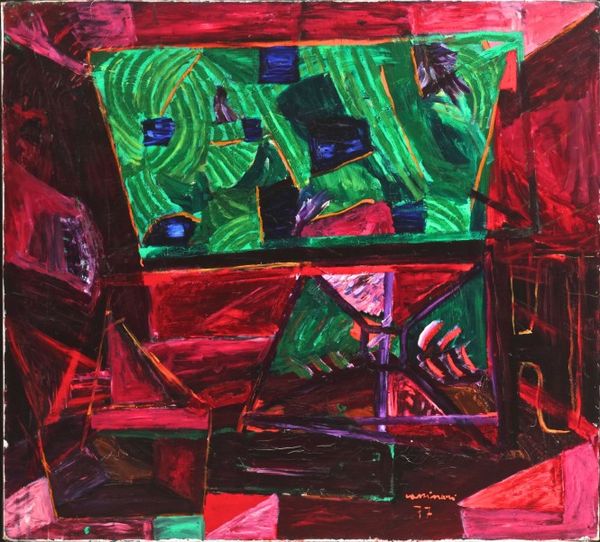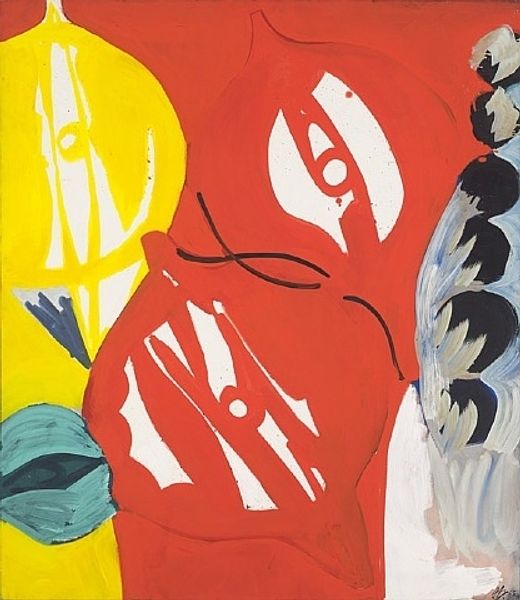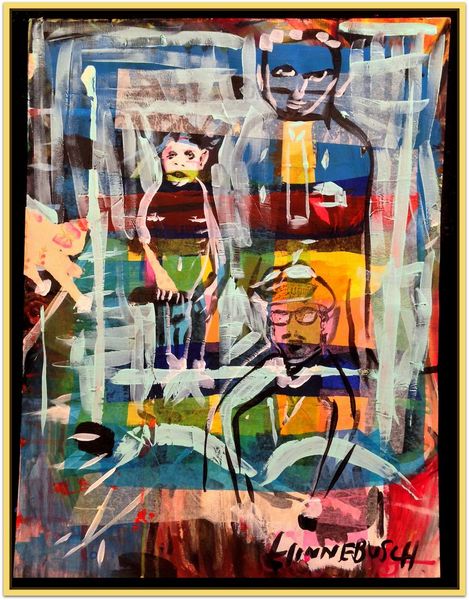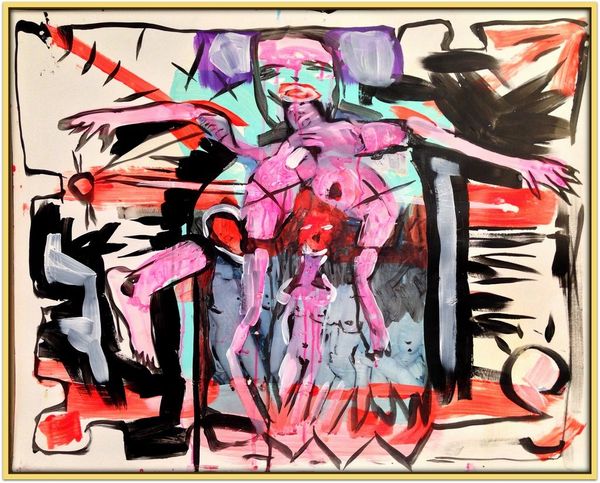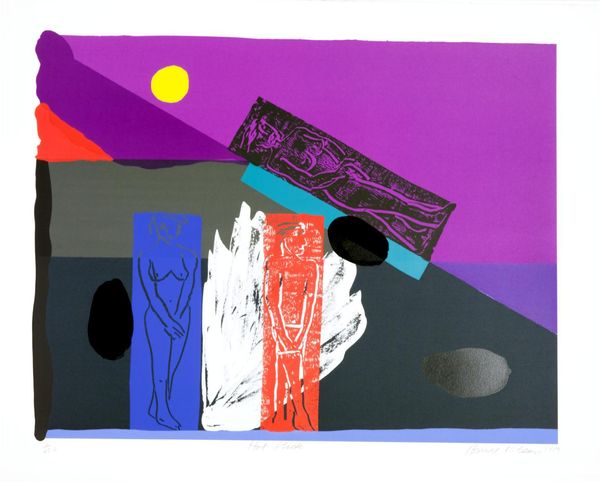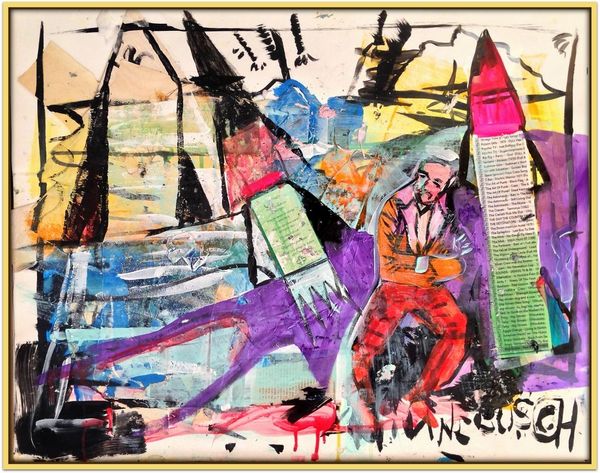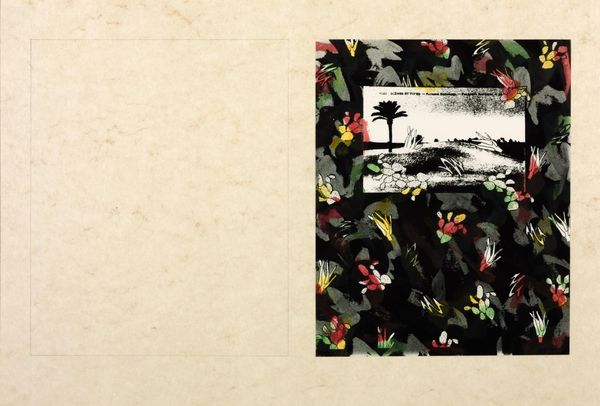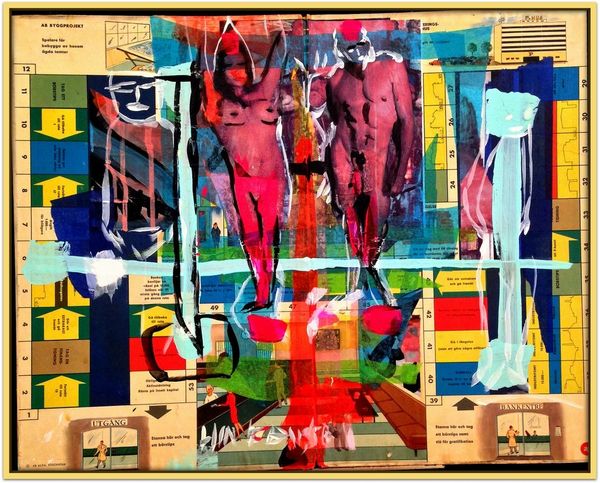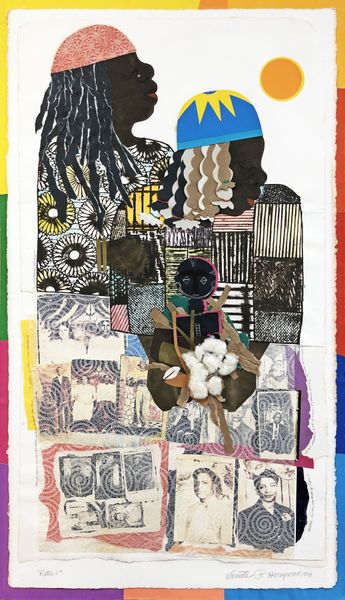
Copyright: Kinder Album,Fair Use
Editor: Here we have Kinder Album’s “Leopolis Jazz Fest,” created in 2018, using acrylic and ink. I’m really struck by the artist's approach. What socio-cultural commentary might Kinder Album be making here? Curator: That’s a crucial entry point. Consider how this piece intersects with larger discussions about cultural commodification. It appears to depict Robert Glasper performing at the Leopolis Jazz Fest. What does it mean to represent a Black American jazz artist within a specific festival context and a European gaze? What narrative is being presented here? Editor: It makes me think about ownership and representation. Is the artwork suggesting that jazz is being appropriated or celebrated? Curator: Both are valid questions! Pop art often flirts with appropriation, challenging notions of originality and authenticity. Zooming in on the image and hashtags framing the figures, we can start thinking of identity, class and cultural boundaries being blurred or reinforced. What power dynamics do you see playing out within the visual language? Editor: I notice how the audience members are mostly silhouettes; this implies they could be anyone from any walk of life and that they are of secondary importance to the stage's spectacle. Does that tie into your earlier point on ownership? Curator: Precisely. How might Kinder Album be positioning Glasper, the city of Lviv, and the globalized audience in relation to jazz’s origins? How does a European audience impact the reception and interpretation of Glasper’s music? Perhaps it’s about bridging cultures and democratizing art access, or it can be about tourism. There's a lot of layers to unwrap in a single piece like this. Editor: This has definitely opened my eyes to the importance of considering the broader context when looking at art. Curator: Exactly, it invites us to constantly re-evaluate and question.
Comments
No comments
Be the first to comment and join the conversation on the ultimate creative platform.

